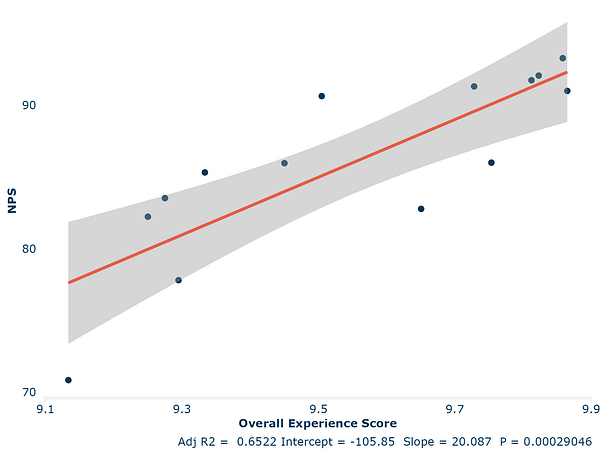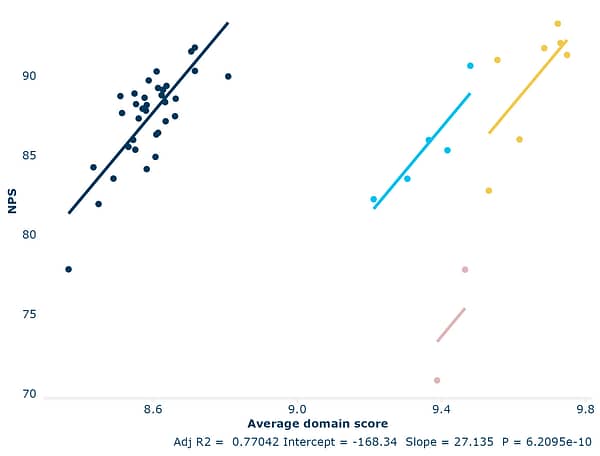Healthcare providers are increasingly using Net Promoter Score (NPS) to capture patient feedback, but how effective is it really? Originally crafted to measure brand loyalty (think Apple or Nike), NPS has found its way into hospitals and clinics worldwide. While many healthcare professionals swear by it, sceptics question its relevance. So, we dug into the data and here’s what we found.
Common critiques of NPS
Despite its popularity, NPS sparks plenty of debate in healthcare circles. Two common concerns stand out:
- Commercial vs. Healthcare: NPS originated in the corporate world to measure customer loyalty and satisfaction. Does it accurately capture nuanced aspects of healthcare, such as communication, pain management, or discharge processes?
- Choice Limitation: In many public healthcare systems, patients can’t always choose their provider. Is it meaningful to ask if they would recommend a service they can’t choose?
Our data, from over ten years of supporting clients to collect and analyse patient experience surveys shows that NPS is strongly correlated with an overall experience question (where they are used), and with specific domains of care questions, making it a very reliable measure of people’s experiences.
Read on to see some stats.
How we analysed NPS and Patient Experience
We analysed recent survey data from over 84,000 patients across 48 hospitals, providing a robust snapshot of patient experiences. Here’s how we approached it:
- Calculated the NPS at each facility.
- Compared it against overall experience ratings and specific care domain averages (like communication, comfort, and responsiveness).
What we found.
NPS vs Overall experience
NPS strongly correlates with overall patient experience ratings.
Our data revealed an extremely high correlation (r² = 0.65, “Adj R2” in the plot)1, increasing further when accounting for differences between individual hospitals2 (r² = 0.90). This means asking patients if they’d recommend a hospital reliably captures their overall satisfaction.
Public vs. private patients? No real difference.
Interestingly, even patients who couldn’t choose their hospital provided meaningful responses about their willingness to recommend it, suggesting NPS works well across different healthcare settings.
NPS vs Average domains of care scores
The colours represent different clients. The slope of the line is determined by the relationship between NPS and Average domain score, the position of the line is determined by the client level effect.
NPS aligns well with specific care domains.
The correlation between NPS scores and detailed aspects of patient care (e.g., staff communication, comfort, discharge procedures) was very strong (r² = 0.77).
Why NPS Matters (and How to Use It)
We showed in a previous article how NPS could be a leading indicator of financial performance. The correlation between NPS and specific domains of care questions shows that it can be your early-warning system for patient experience issues—think of it as your patient-experience smoke alarm.
Here’s how providers can practically leverage NPS:
- Early identification: Quickly spot trends or issues before they escalate.
- Focus improvements: Combine NPS with specific domain scores to pinpoint exactly where patient dissatisfaction arises.
- Dig deeper: Open-ended questions let patients share exactly what affected their experience, guiding targeted action.
- Drive strategic decisions: Use NPS-driven insights to prioritise resources and improvements effectively.
Looking Ahead: What the data tells us
Our upcoming research also shows survey length doesn’t affect response rates, meaning comprehensive feedback collection is feasible and valuable. Pairing NPS with detailed questions allows healthcare providers to perform Key Driver Analysis, identifying exactly which elements of patient care need attention.
It’s possible to go one step further – well placed open-ended questions allow patients to leave comments about aspects of their journey that impacted them. NPS lets you know there might be a problem. You can then identify where the problem is occurring from the domains of care questions, and comments can help you quickly identify any specific issues for quick remedial action.
Get Started Improving Patient Experiences
Want to transform patient feedback from tedious to transformative? Reach out—we’re here to help ensure everyone receives the outstanding care they deserve.




